
views
Using Easy Household Remedies

Bathe in warm water. Warmth and moisture tends to make the adhesive in many bandages more pliable. One convenient way to soak the sticky area in warm water is to simply take a bath or shower. The adhesive may come off on its own, or may need a little gentle scrubbing from a washrag or mild abrasive pad. If you don't have time to take a bath or shower, just fill a bowl or pan with warm water and soak the affected area. This works best if you can let the adhesive soak for a long time. Try this remedy while you're reading or watching television.
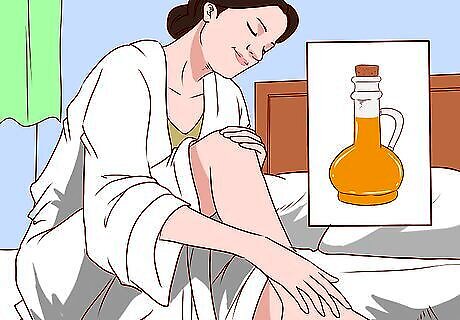
Coat with a mild cooking oil. A few drops of olive, canola, vegetable, coconut, or sunflower oil can help remove adhesive from the skin. Some adhesives dissolve in oil. Others lose their grip when the oil finds its way between the glue and the skin. For best results, work the oil into the affected area with a little gentle action from a soft rag or cotton swab. You don't need much — your goal is to lightly coat the skin, not drench it. Let the oil soak for a moment or two before rubbing gently with a soft towel or cotton ball. Repeat as needed to get all the adhesive off.

Apply ice to the bandage residue. Cover the ice with a paper towel to prevent it from sticking to skin and leave in place for five minutes. The ice will make the adhesive brittle, which may cause it to release.
Using Common Skin Care Products
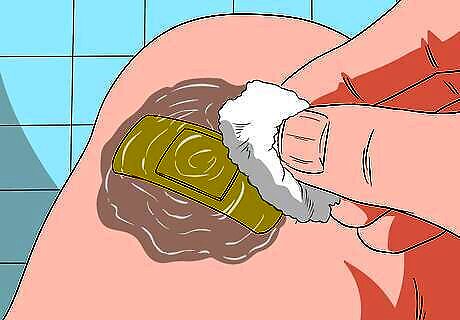
Soak residue with baby oil. Baby oil works using the same principles as cooking oils, either by dissolving the adhesive or releasing its grip upon skin. An added benefit is that most baby oils are made to be especially gentle, making this a great choice for delicate skin. Most baby oils are simply mineral oil with a small amount of scent added. You can use pure mineral oil as an alternative to baby oil — often, it is slightly cheaper. If you're removing adhesive from a child's skin, try adding a drop of food coloring to the baby oil and using it to "paint" the affected area. The oil will remove the adhesive and the coloring will provide a fun distraction.
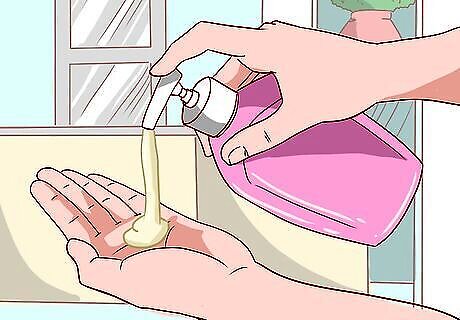
Apply a gentle lotion. Since most lotions have an oil or lipid (fat) base, they can work for removing adhesive just like baby oil or cooking oils. Rub in a small amount of lotion, let it sit for several minutes, and rub with a gentle towel or cotton ball. Unscented lotions are best. The chemicals used for added fragrances can sometimes cause pain and rashes on irritated skin.
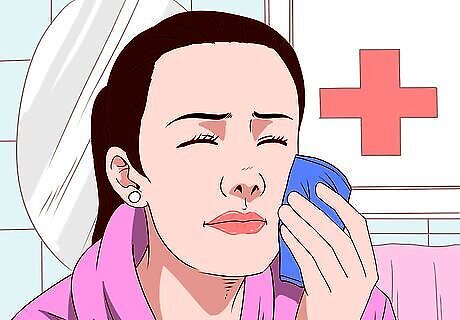
Use a warm compress in combination with baby oil, lotion, or some form of cooking oil. Since warmth loosens many of the adhesives used in bandages, you can use it to make these materials more effective. Warm water will wash off the oil or lotion, so use a warm compress instead. Our article on warm compresses details several easy ways to do this. Try filling a tube sock most of the way with dry, uncooked rice. Tie a knot in the open end to keep the rice in. Microwave the compress in 30-second increments until it is warm, but not too hot to handle. Hold the compress over the adhesive as you let the oil or lotion soak in. Place a rag between the compress and the skin if you are worried about getting the sock greasy.
Using Chemical Products
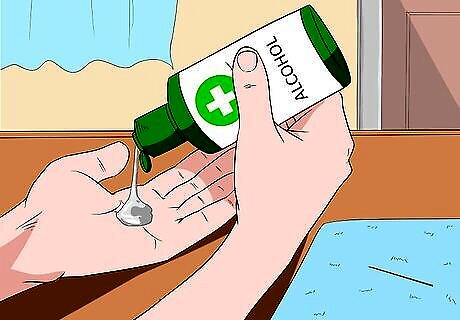
Apply rubbing alcohol. Also known as isopropyl alcohol, this common household cleaner is inexpensive and can usually be found at grocery and discount stores. Rubbing alcohol is very effective at dissolving some types of adhesive. Apply a small amount with a Q-tip or cotton ball, let it sit briefly, and rub gently to remove. Rubbing alcohol can dry out and irritate skin, especially in delicate areas like the face. Use only a few drops at a time and allow your skin to rest between uses.
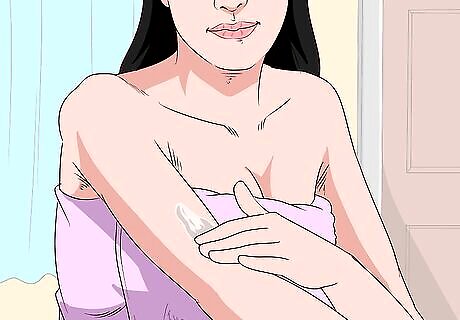
Moisten with nail polish remover. The active ingredient in most nail polish removers is acetone, a chemical solvent. Acetone also works as a solvent for many common glues and adhesives, dissolving them on contact. Rub a small amount into the affected area and let it sit for a few moments, then continue rubbing gently to remove. Acetone can have a similar drying or irritating effect on the skin as rubbing alcohol, so take similar precautions. If you can find it, pure acetone works just as well as nail polish remover. Exercise care in using acetone; it is a highly flammable substance and thus should not be used in combination with heat. Avoid using non-acetone nail polish removers as they will not contain the solvent required to dissolve the bandage residue.
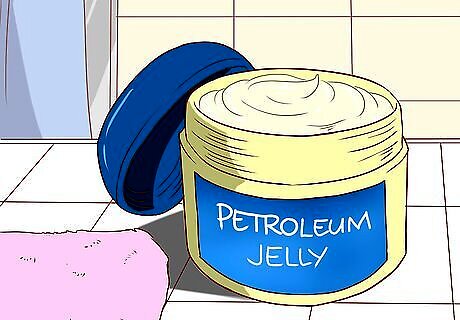
Coat with petroleum jelly. Products like Vaseline made out of petroleum jelly work like oils and lotions to remove adhesive from the skin. A unique benefit is that petroleum jelly is extra-thick, so it's easy to let it sit for a long time (though its greasiness makes this unpleasant for some). Simply work a thin layer into the affected skin and let it sit undisturbed for five to ten minutes, then wipe off with a gentle rag or paper towels. Petroleum jelly is very hydrating and won't dry out your skin.

Employ a pharmacy-grade adhesive remover. These products are specially designed to remove the types of adhesives found in bandages. Adhesive removers are generally manufactured either as sprays or disposable wipes. They are a little more expensive and harder to find than the methods above, but they work especially well. You may be able to find these products at your local pharmacy. If not, a wide variety are available for order online. Prices vary from product to product but typically range between $10–$25 per bottle or package.
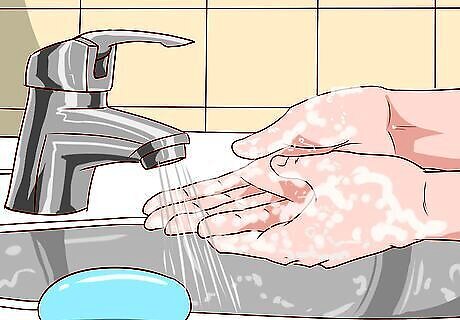
Rinse with soap and water after using a chemical solution. Many chemical products (especially rubbing alcohol, acetone, and some adhesive removers) can irritate the skin if they are in contact with it for too long. To avoid this, make sure to wash the area with soap and water after each use of these chemicals. This will help remove them from the skin and reduce irritation. If you aren't able to get all of the adhesive off your skin at once, consider waiting a day before you repeat use of a harsh chemical again. The break will give your skin a chance to rest and recover. Alternatively, combine a chemical treatment with one of the gentler solutions. Apply a moisturizer after washing with soap and water since soap can dry your skin out.




















Comments
0 comment